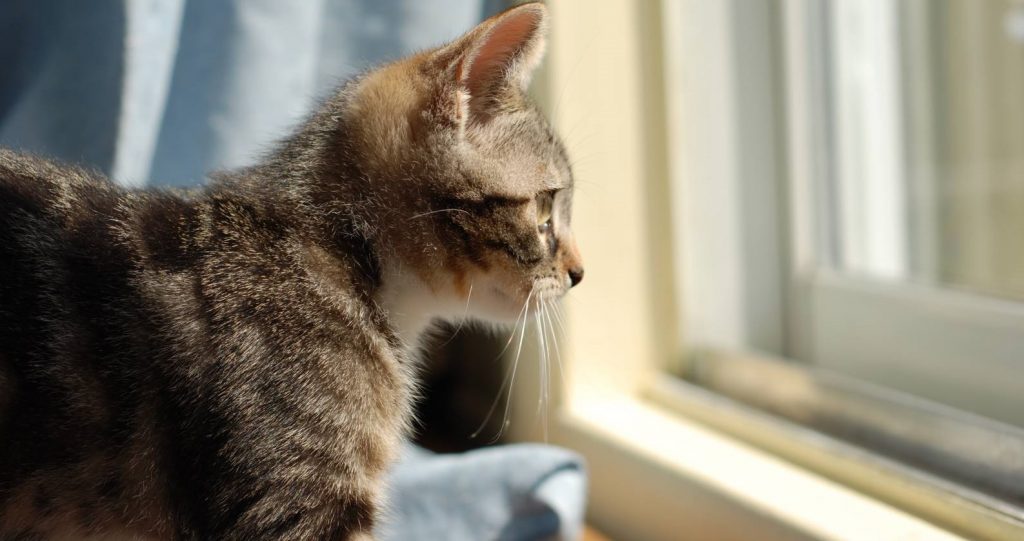
Cats are the animals most raised by humans. This is inseparable from the gentle and docile nature of cats. However, like humans, cats also apparently can experience trauma and depression. You have to know about signs of depressed cats.
The trauma experienced by cats can result in impaired physical and psychological health of the cat. The trauma experienced by cats can be caused by physical violence, accidents, diseases, and others.
Cats that have experienced trauma need to be treated immediately so as not to pose a dangerous risk to the cat. Thus, cat owners need to know the signs of cat being traumatized and solutions to deal with trauma to cats.
The following article will explain a bit about the signs that appear in cats that have been traumatized along with solutions to deal with them.
Signs of a Cat Having Trauma
1. Aggressive and Mutual Attack Between Cats
Cats that have experienced trauma will tend to be more aggressive than before. Cats will scratch and bite when touched or held. In fact, cats will be very difficult to approach, even by the owner himself.
In addition, cats will also attack other cats more aggressively, even to the point of hurting themselves.
2. Tends to Be Silent and Weak
Cats that have experienced trauma will also look more silent than usual. In addition, cats will also look weak and not powerful at all. This is because the cat is unable to forget the events that made him traumatized. So, the cat doesn’t want to do anything because it doesn’t want to experience the same trauma as before.
3. Decreased appetite and changes in body shape
Trauma can make your cat’s appetite decrease until he loses his appetite. This makes the cat’s body condition turned very thin.
If this happens continuously, the condition of the cat will be very weak and vulnerable to disease. Maybe, cat can experience common diseases that often experienced by cats or contagious diseases that can infect the owner too.
4. Over Grooming
Grooming is a common activity for all cats, whether they are small, mature, healthy or sick cats. However, cats who are traumatized will be more grooming than usual.
5. Hiding and not moving
Trauma to a cat can make the cat afraid to get close to anything around him. Cats can decide to hide and won’t move for some time. This was done to restore his fear to improve again.
If the cat feels good, then the cat will come out of hiding and return to activity as usual.
6. Panic and Restlessness
The signs of a panic and anxious cat are often howling. A cat that has been traumatized may not immediately howl after a trauma. However, three or four days, the new cat will roar as if starving.
In fact, when approached, the cat will run away from people who approach it.
7. Changes in Stool
Stool in a cat who is traumatized will also change to an abnormal. Usually cat feces that are traumatized will turn to runny, black, have a very pungent odor, and some are to contain tapeworms.
8. Drink a little
In addition to reducing appetite, cats will also be more reluctant to drink when traumatized.
Cat drinking capacity can decrease dramatically compared to before. This can be dangerous if the cat really doesn’t want to drink at all.
This can make the cat dehydrated. Dehydration is very dangerous for the health of the kidneys and cat’s urinary tract.
9. Fear of Sound
When your cats hear the sound of chickens, motorbikes, people screaming or the other, cats will be very scared and stay in the corner of the wall while the view continues to glare (not blink). For this one feature is the easiest sign to recognize.
Solution to Overcoming a Cat that Has Trauma
1. Invite the Cat to Play
The first way to deal with a cat that is experiencing trauma is to invite the cat to play. As much as possible, the owner must make the cat happy. The owner can take the cat for a walk or just play with artificial toys at home.
2. Provide nutritious foods and multivitamins
Cats that are traumatized also really need the intake of nutritious foods and multivitamins. This aims to prevent the cat from disease and not worsen the condition.
Nutritious foods and multivitamins to be selected can be consulted with the nearest veterinarian. You can also make your own cat food by recipes that you can found in here.
3. Provide Good Care
In addition, the owner must provide the best possible care for the cat. As much as possible, avoid physically hurting the cat or shouting at the cat. This will only make the cat more afraid and more traumatized by the condition.
4. Avoiding repeated trauma
Keep the cat away from the chance of a repeat trauma. The owner can keep the cat away from the cause of trauma or by making the cat brave to deal with the cause of the trauma. This will be effective in building self-confidence in cats, so that trauma will go away on its own.
5. Take the Cat to the Veterinarian
If the owner has made the handling steps and the cat still cannot recover from trauma, then the owner can take the cat to the nearest vet.
The veterinarian will provide treatment and direction to the owner about what needs to be given and done to cure the cat’s trauma. This is why veterinarian are very important.
That was a few signs that need to be known by the owner about a cat that is experiencing trauma. In addition, we have also elaborated a little about solutions that can be used to deal with trauma cats.
Hopefully this article is useful and can help you deal with your cat who is experiencing trauma. See you in the next article.
